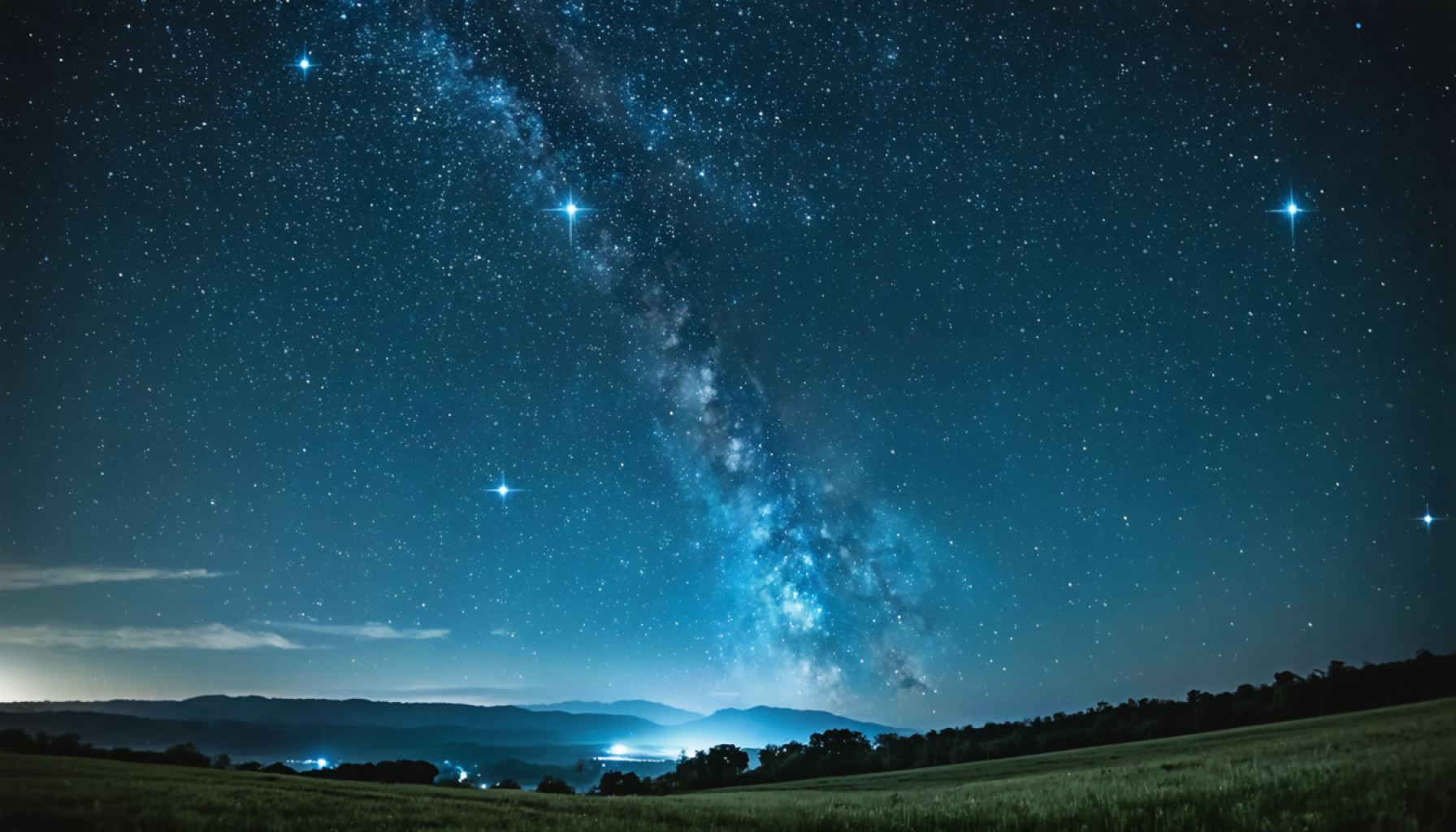- April 2025 features remarkable celestial events for stargazers.
- The month begins with a crescent moon pairing beautifully with the Pleiades star cluster and Jupiter on April 1.
- The “Pink Moon” appears on April 12, offering a smaller “micro moon” spectacle, with Spica shining closely nearby.
- The Lyrids meteor shower peaks on April 21-22, best viewed under the dark skies with 10-20 meteors per hour.
- Venus reappears as the “Morning Star” late in April, visible in the eastern sky before dawn.
- For optimal viewing, use digital planetariums and check local sunrise times.
As spring unfurls its vibrant colors across the Northern Hemisphere, the night sky above complements this earthly awakening with its own parade of celestial wonders. After March’s spectacular eclipses, April 2025 ushers in serene yet dazzling opportunities for stargazers. Here’s why you’ll want to turn your eyes to the heavens this month.
April begins with a captivating cosmic meet-up: on Tuesday, April 1, a slender crescent moon hangs low in the western sky, seemingly cradling the enchanting Pleiades star cluster, known as the “Seven Sisters.” This iconic formation acts as a celestial guidepost, while mighty Jupiter rests watchfully to their upper left. For those with binoculars handy, this night offers a rich tapestry of starlight, each point a whisper of mysteries far beyond.
As the month progresses, don’t miss the full “Pink Moon” rising on Saturday, April 12. Contrary to its name, this moon isn’t coated with a rosy glow. It’s named for the pink moss phlox that blooms in the wake of retreating winter snows. This full moon, however, will appear smaller than most—a diminutive “micro moon,” owing to its more distant orbit. Keep an eye out for the bright star Spica, which will shine closely alongside, adding a twinkling punctuation to the moonlit spectacle.
On the nights of April 21-22, thrill-seekers of the stars will find delight in the Lyrids meteor shower. As a waxing gibbous moon bows out early, the resulting dark skies make it an ideal time to catch swift, shimmering meteors as they streak across the eastern horizon. Expect to see anywhere from 10 to 20 meteors an hour, each one blazing briefly against the backdrop of the cosmos’ dark vault.
And as April winds down, Venus will make its grand comeback. After a brief sulk into the sun’s glare, it reemerges anew as the “Morning Star,” her brightness piercing the pre-dawn eastern sky. The return of Venus in late April offers a striking reward for early risers willing to gaze eastward an hour before sunrise.
April 2025 brings astronomical enchantments to those who watch with patience and wonder. Whether you’re a seasoned astronomer or a casual star enthusiast, this month offers skies full of stories waiting to unfold. For precise viewing times, consider using digital planetariums and local sunrise tools. These enchanting moments above are a gentle reminder of the vast universe we are part of, urging us to step outside and look up, savoring every sparkling moment.
Unlock the Secrets of April’s Night Sky: What to See and How to Prepare
April 2025 is a remarkable month for stargazing enthusiasts across the Northern Hemisphere. From captivating celestial alignments to meteor showers, the night sky promises a host of spectacles. This guide will expand on the celestial events mentioned and provide insights on how to make the most of them, along with additional facts and tips for observers.
Key Celestial Events in April 2025
1. Crescent Moon and the Pleiades (April 1, 2025)
– Viewing Tips: Look west after sunset to witness this enchanting celestial duo. A pair of binoculars can enhance the experience by revealing more stars within the Pleiades cluster.
– Fun Fact: The Pleiades, or “Seven Sisters,” is one of the nearest star clusters to Earth, approximately 444 light-years away.
2. The Pink Micro Moon (April 12, 2025)
– Background: This moon won’t appear pink but is named for pink moss phlox flowers blooming in April. The term “micro moon” refers to its smaller appearance, happening when the Moon is at its farthest point from Earth (apogee).
– Pro Tip: Use a telescope to spot Spica, the bright star that joins the moon, for an interesting contrast in brightness.
3. Lyrids Meteor Shower Peak (April 21-22, 2025)
– What to Expect: The Lyrids can produce up to 20 meteors per hour at their peak. These meteors, originating from Comet C/1861 G1 Thatcher, are known for leaving bright dust trails.
– Ultimate Viewing: Find a location with minimal light pollution, lie on your back, and allow your eyes to adjust to the darkness for at least 20 minutes.
4. Venus Returns (Late April 2025)
– Observation Details: Venus will shine brightly in the pre-dawn sky, making it easy to spot eastward about an hour before sunrise.
– Did You Know? Venus is the third brightest object in the sky after the Sun and the Moon, earning the nickname “Morning Star.”
How-To Guide for Optimal Stargazing
– Equipment List: Essential stargazing tools include binoculars, a telescope, a star map or astronomy app, and a comfortable chair or blanket.
– Plan Ahead: Check weather forecasts and use digital planetariums to pinpoint the best viewing times and locations in your area.
– Best Practices: Allow your eyes to adapt to the dark, minimize use of bright screens, and stay warm with layered clothing.
Additional Insights & Trends
– Stargazing Apps: Apps like Star Walk (link name) and SkySafari offer real-time sky maps and can notify you of upcoming celestial events.
– Eco-friendly Practices: Reduce your carbon footprint by carpooling with friends when traveling to dark-sky locations.
– Trends to Watch: The rise in popularity of astrophotography is making events like these more accessible—invest in a beginner-friendly camera adapter for your smartphone or telescope.
Actionable Recommendations
– Get Involved: Join a local astronomy club to connect with like-minded stargazers.
– Stay Informed: Keep track of major celestial events throughout the year by following reputable astronomy websites like Space.com.
– Capture the Moment: Practice smartphone astrophotography techniques to document your celestial observations.
April 2025 offers a celestial feast for all star lovers. By following these tips and insights, you can make the most of the night sky’s offerings, from witnessing the pink micro moon to catching the trails of the Lyrids meteor shower. Grab your binoculars and mark your calendar for an unforgettable month of stargazing.







